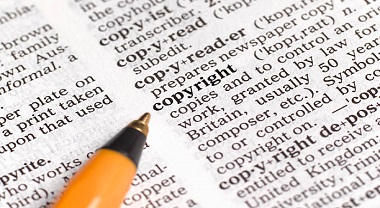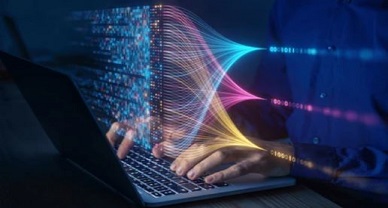Exploring the Various Facets of Copyrights in Digital Spaces
Technology and copyright law
Copyright laws play a crucial role in protecting creative expressions such as literary works, artistic works, and musical works. Through copyright enforcement, an exclusive right is granted to creators. These exclusive rights comprise the right to copy, distribute, perform, license, or adapt the work. Thus, copyrights protect the creative expressions of creators, while providing them absolute rights over their creations. Today, we live in a wired world. Digitization has impacted several aspects of our everyday life. The advancement of technologies has also significantly developed copyright laws over the years. Moreover, the advent of digitalization in various industries has impacted the manner in which copyrights are marketed, licensed, or consumed. Some of the most prominent examples of copyright licensing in digital environments include Creative Commons and Open Source Software. Creative Commons is a non-profit organization that aims to provide free copyright licenses to creators in order to make their work available to the general public. Whereas, Open Source Software can be defined as computer software that is released under a license (by the copyright holder) through which users can modify, study and distribute the source code and the software. While digitization has immensely benefited copyright-related transactions in the digital space, issues such as unauthorized copying, plagiarism, and infringement continue to plague several domains. The digital space has made it relatively easier to illegally disseminate copyrighted information at an expedited rate. However, there are several international efforts in place to diminish the unauthorized copying of protected work in digital spaces. Additionally, Technological Protection Measures (TPM) could also significantly contribute towards restricting the unauthorized use of copyrighted works.
[Image Source: Getty Images]
International efforts to curb copyright infringement in the digital space
-
The Digital Millennium Copyright Act
The Digital Millennium Copyright Act (DMCA) is a United States copyright law that aims to criminalize the creation, circulation, or distribution of technological services or devices that are created to circumvent digital rights management methods. In other words, the DMCA restricts acts that are intended to circumvent measures created to control access to copyrighted works in the digital space. Moreover, the DMCA has laid out stringent provisions that may levy penalties for copyright infringement in the digital space. The DMCA was passed on the 12th of October 1998 by the United States Senate. The DMCA aims to exempt the direct and indirect liability of intermediaries such as internet service providers in cases of copyright infringement. In case copyright infringement is observed on any digital platform, a content creator can file an application in order to generate a DMCA takedown notice. Creators can file a complaint on the digital platform (for e.g.: Facebook, YouTube, or Twitter) wherein the infringement has occurred, or approach service providers such as DMCA.com. Most often than not, platforms may give users an opportunity to reply to the DMCA takedown notice. Once it is established that a user has infringed upon a creator’s original work, the infringer is obligated to delete the content from the digital platform.
Time and again, the DMCA has been criticized for various structural and legislative flaws. For instance, the DMCA has been criticized for misusing takedown notices and favoring large copyright holders. Consequently, this has resulted in the accidental removal of legitimate content from original artists. Secondly, several have contended that DMCA jeopardizes fair use. This implies that DMCA’s ban on all methods of circumvention, as well as technological tools that can be used for circumvention, may result in providing copyright owners the right to unilaterally jeopardize the general public’s fair use rights.
-
WIPO Copyright Treaty
The WIPO Copyright Treaty (WCT) is a Treaty that was adopted on the 20th of December 1996. It officially came into force in March 2002. The Treaty attempts to identify the effect of digital technologies on copyright laws and aims to regulate international legislations and rules that are required to fight copyright issues in the digital space. The Treaty states that:
“Recognizing the need to introduce new international rules and clarify the interpretation of certain existing rules in order to provide adequate solutions to the questions raised by new economic, social, cultural and technological developments, Recognizing the profound impact of the development and convergence of information and communication technologies on the creation and use of literary and artistic works”
Under the Treaty, various rights of creators such as the right to distribute, right of rental, and right of communication to the public is ensured. Moreover, the signatory countries of the Treaty are obliged to provide adequate legal protection against technologies that may attempt to circumvent technological measures that are in place to protect copyrighted works in digital environments.
-
WIPO Performances and Phonogram Treaty
The WIPO Performances and Phonograms Treaty (WPPT) is a Treaty that was adopted on the 20th of December 1996. The Treaty aims to deploy adequate and efficient protection of copyrighted works, with a particular focus on the rights of performers and producers of phonograms. The Treaty helps combat threats that are posed by digital technologies that may impact the rights of performers or producers of phonograms. Particularly, Articles 7, 11, and 16 of the Treaty deals with digital copyrights pertaining to the rights of performers and producers of phonograms. The Treaty reads that “The reproduction right, as set out in Articles 7 and 11, and the exceptions permitted thereunder through Article 16, fully apply in the digital environment, in particular to the use of performances and phonograms in digital form. It is understood that the storage of a protected performance or phonogram in digital form in an electronic medium constitutes a reproduction within the meaning of these Articles.” Article 18 of the Treaty ensures protection against circumvention of technological tools that are in place to restrict the unauthorized copying of performances or phonograms. Moreover, Article 19 of the Treaty directs signatory countries to deploy legal provisions against the infringement of technological measures such as digital rights management tools.
Technological protection measures
Technological Protection Measures (TPM) are access control technologies or management technologies that attempt to protect copyrighted works in digital environments. TPM systems cannot be considered as enforceable laws to protect copyrights in the digital space. Rather, TPM systems are digital tools that would help check unauthorized access to digitally protected works in online environments. Technological Protection Measures may include tools such as watermarking, passwords, digital signatures, digital certificates, private/public keys, or cryptography.
Author: Sanjana, a BBA LLB student of Symbiosis Law School (Hyderabad), in case of any queries please contact/write back to IP And Legal Filings at support@ipandlegalfilings.com.




